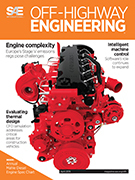Training / Education
Cybersecurity in the Energy Sector
Anytime
Anatomy and examples of cyberattacks on industrial control systems (ICS) and critical infrastructures (CI): In this course you will understand the importance of cybersecurity for Critical Infrastructure and you will know typical attack vectors, vulnerabilities and defense strategies. ...Decentralized Energy Systems Security: In this course you will know relevant technical countermeasures for cybersecurity. You will understand threats and solutions concerning data communication and network security in the energy systems.







